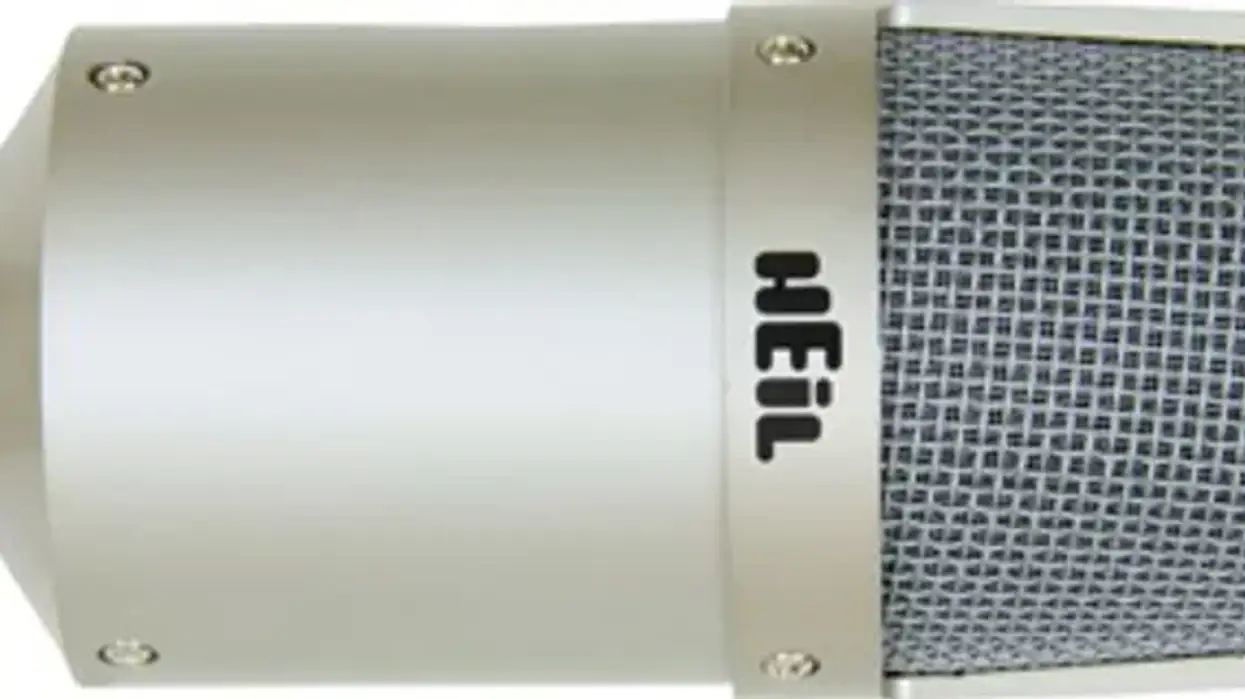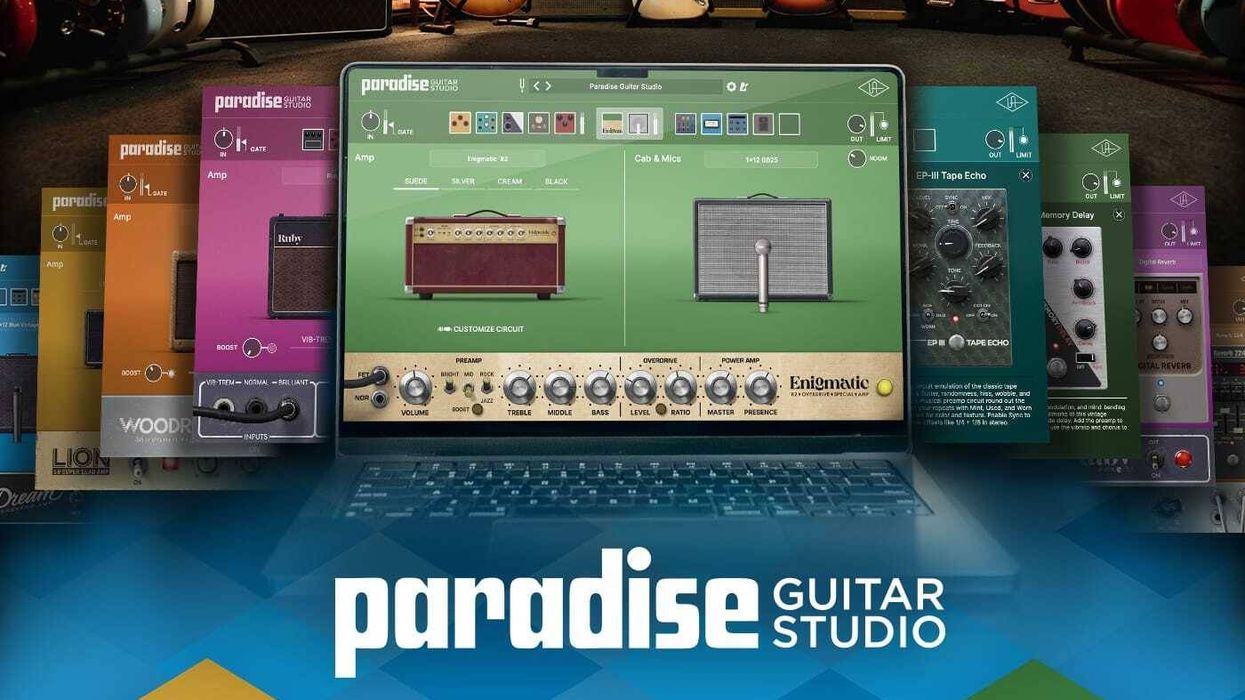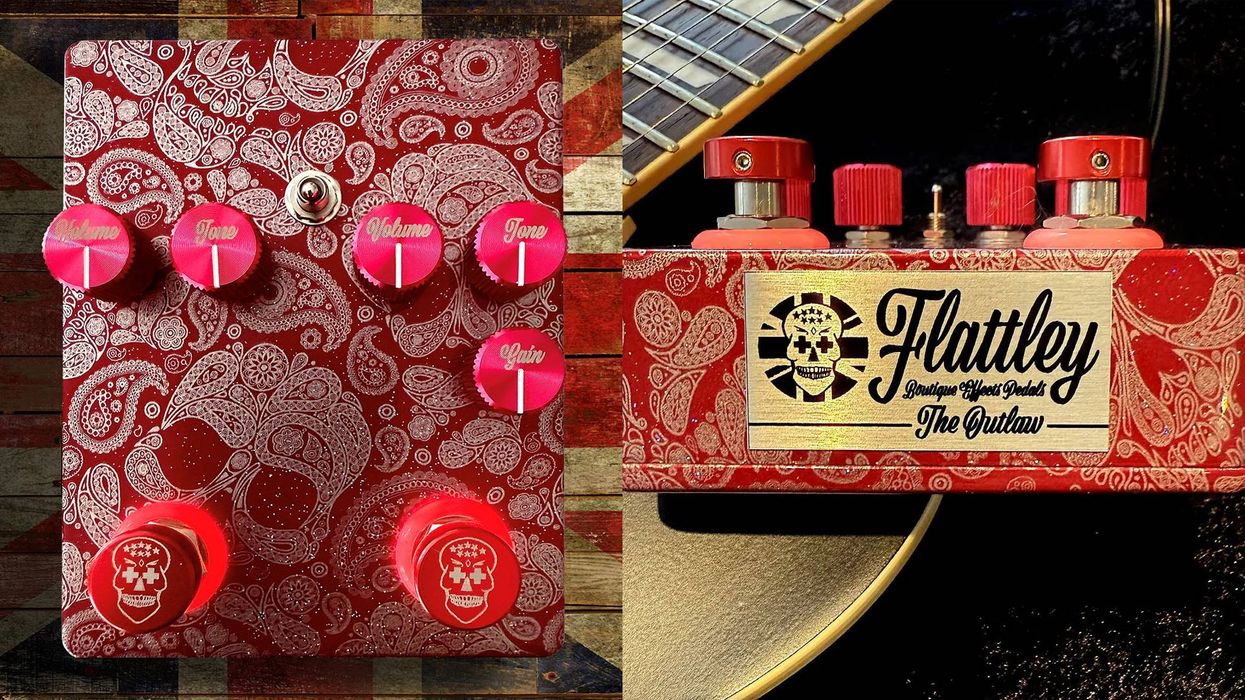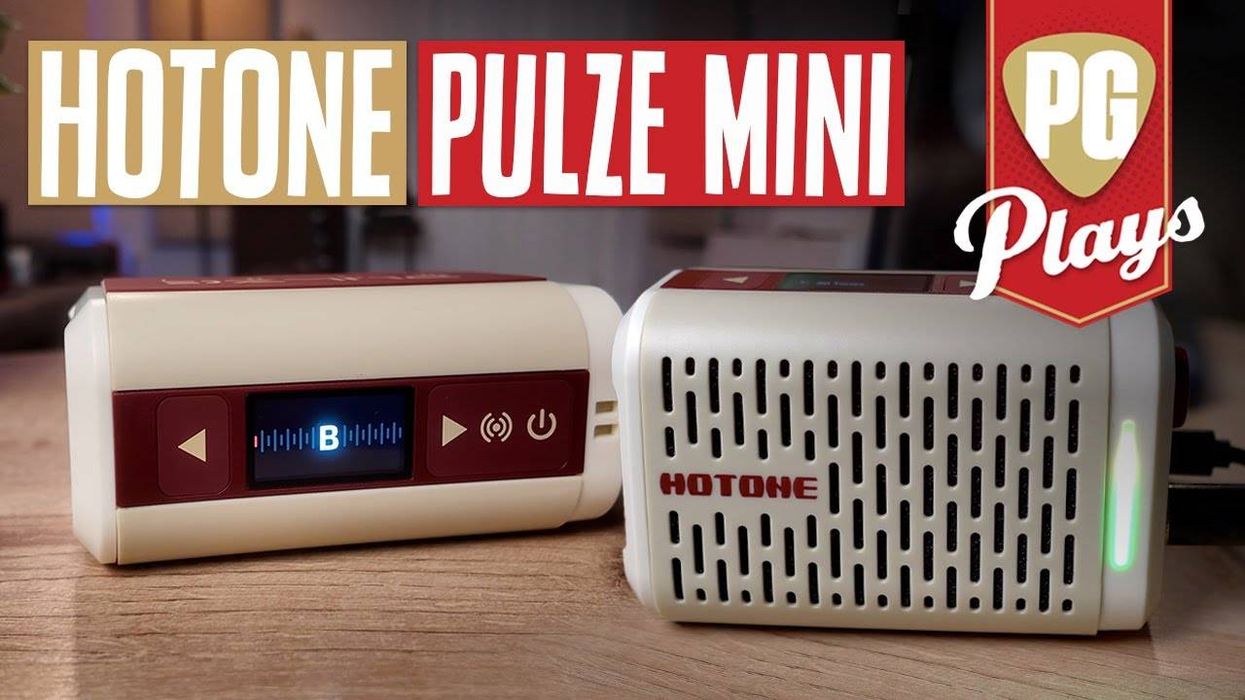Not Your Ordinary Mic
If you’re the kind of player who does a few gigs a month in a club setting, your ears probably are “tuned” to Shure’s pair of old standby mics – the SM57 and the SM58. The familiar ball-end SM58 covers all your vocal duties while the straight-end SM57 finds itself in front of anything without lips, from amps to drums to horns and more.
What do your ears hear with these mics? First off, you’ll get a proximity effect, with the low end growing bigger as you move in. And then there’s the presence peak, with the upper mids bumped up to add crispness and clarity.
If this description matches your experience with mics, then the Heil PR30 will catch you a bit off guard. It has no presence peak. And it has no noticeable proximity effect.
In essence, its frequency response is flat – something alien to most musicians’ ears.

Visually, the PR30 might surprise you, too. It looks like a side-address studio condenser mic, but it’s actually an end-address dynamic mic with a large diaphragm element. Its structural departure from the standard dynamic mic format is enough of a visual surprise that Heil decided to wrap a cautionary piece of paper around the sides of the mic – a reminder to speak into the end rather than the sides.
The PR30 is the centerpiece of Heil''s dynamic mic series. The handheld PR20 is more responsive on the bright end and is often used for vocals, cymbals and snare drums. The PR40 has a deeper bottom -- deep enough for use with kick drums and bass -- but still has plenty of top end and is thus favored for male vocals and various broadcast applications. The PR30 is building a quite a reputation for miking guitar amps and acoustic soundholes as well as toms. It, too, is showing up in a lot of broadcast booths.
We wanted to give the PR30 a thorough test with a guitar amp, but that took a little planning. To start testing the mic right away, we took it to a few blues gigs and to a band rehearsal.
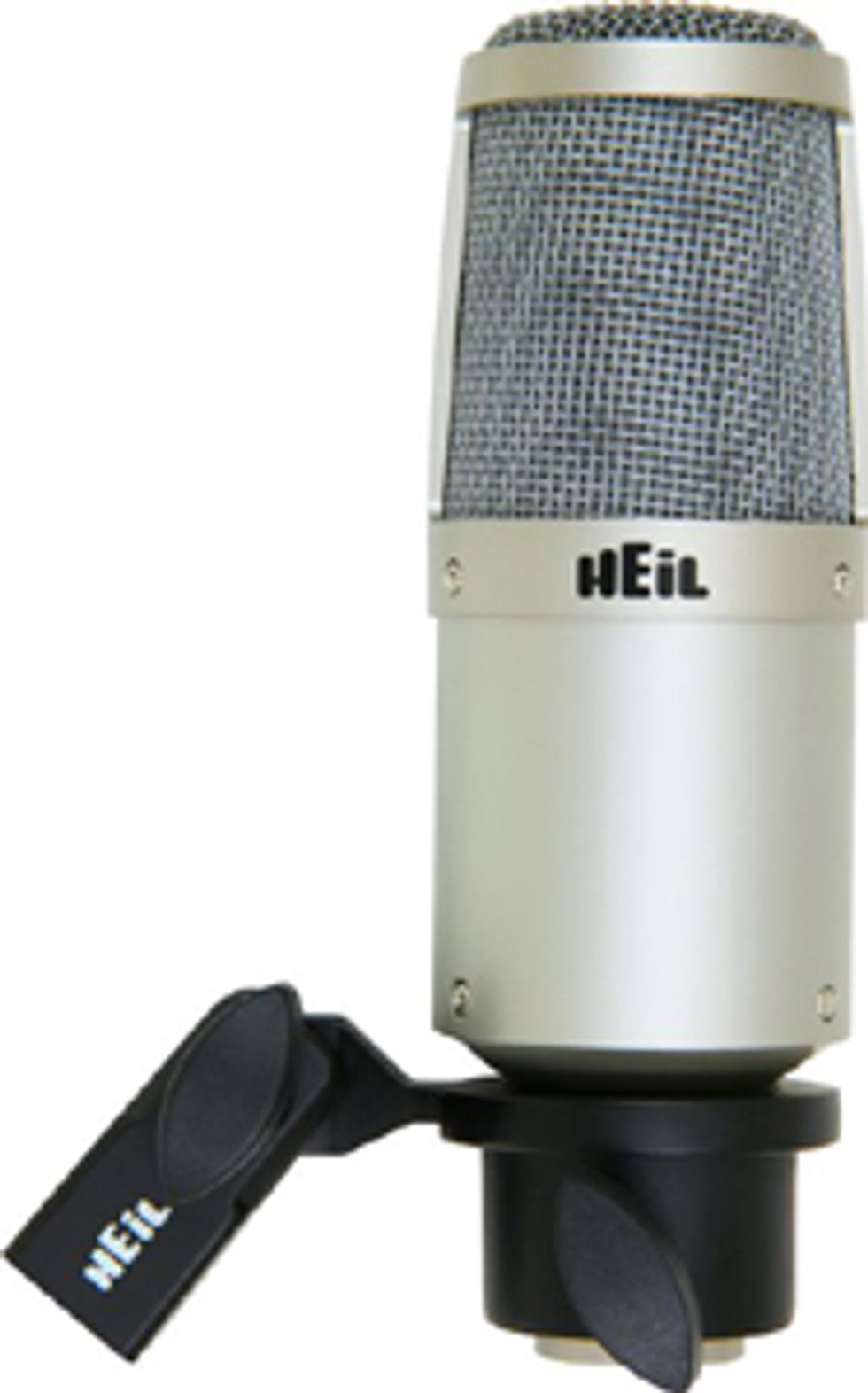
Versatility
First, we tried using it as a vocal mic. You might expect that differences among mics of the same basic class – dynamic mics, in this case – would be subtle, but three things quickly stood out about the PR30. First, we really noticed the lack of proximity effect. Moving in close, the low end response changed very little. Second, the mic’s upper end was warm yet nicely defined – never the harshness that you hear from a dynamic with a presence boost. The third thing we noticed about this mic was quite pleasing – it has an amazing sense of detail and articulation. Dynamics and vocal attack really stood out, to the point where I began to feel self-conscious listening to my vocals in our HotSpot monitors.
Shortly after getting a basic sense of this mic, I stopped by a local music shop, where a display of Heil mics sat on the sales counter. The guy there confirmed what our ears had heard, adding that most people really loved using the PR30 for voice, but that a few customers were dissatisfied – they’d sounded too much like themselves.
The PR30’s next gig was with our three-piece blues group – guitar, harmonica, upright bass and vocals. The PR30 went to the harp player this time, covering both his vocals and his harp when it didn’t go through an amp. Once again, we noticed a high degree of detail and the lack of proximity effect. For the harp, it was actually hard to tell it was mic’d – it sounded that natural. By the end of the gig, the harp player was trying to buy our review model off me!
Next, we used the PR30 for a practice, this time mikng our singer. She sings hard and she sings high and most mics make her sound a bit too bright. With the PR30, though, the upper range of her vocals was warm and smooth, yet still detailed. This confirmed our experiences with the other uses.
Amping Up
Finally, we got to the guitar amp test. We wanted to know what the PR30 sounds like on a guitar amp compared to others that are commonly used.
To check this out, we rounded up a Shure SM57 (street price, $100), an ElectroVoice RE20 (street price $400), and a Sennheiser e609 (street price, $110). At $250, the Heil PR30''s cost more than doubles that of the Shure and the Sennheiser, but still falls well below the EV.
Our test amp was a Allen Old Flame, running 40 tube watts into a 15” open back combo. The guitar was a Tom Anderson Cobra Special S, equipped with Anderson’s own humbuckers. To make the best comparison, we recorded with all four mics at the same time. Each was placed the same distance away from the speaker, each toward the edge of the cone. The mics were then recorded digitally through Focusrite preamps.
Guitar licks were based on a blues shuffle, including some chords, some low single notes, and some riffing higher up the neck. We listened to each track through a pair of studio-standard AKG K 240 headphones and a pair of nice sounding M-Audio SP-5B nearfield monitors.
We thought the SM57 lacked the clarity and focus of the PR30, with notably less detail, attack, and dynamic range. The RE20 had nice detail, but was shy in the upper frequencies and seemed just a bit boomy in the low end.
The e609 fell somewhere in between the Shure and the EV – good definition, good clarity, good frequency response, if a smaller bottom end than the others.
The PR30 sounded the most neutral of all four mics, with the nicest articulation of the batch. It had strong attack and detail, with a good bottom – but not overly deep. Its presence seemed to jump out in a pleasant way, and would likely fit nicely into a mix.
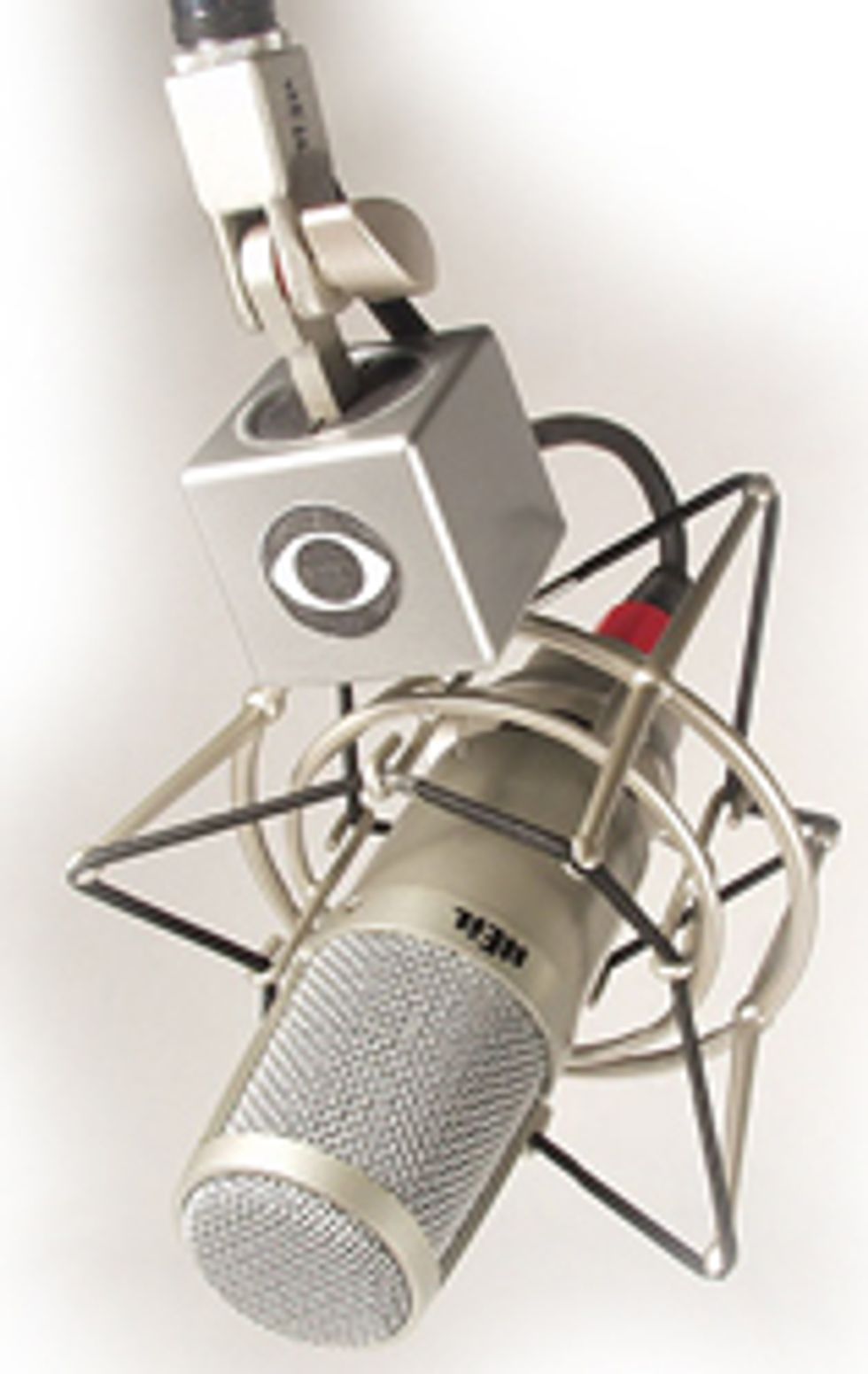
Are there downsides to the PR30? Probably the biggest disappointment was its handling noise. Tapping the mic produced an audible thud, much more than the SM57. Even tapping the mic stand or the mic cable produced a noticeable sound. Note – there is an optional shockmount, but that’s another $100 (see left). The PR30 has no pad or bass rolloff switch. There isn''t a carrying pouch included, either. However, the mic does come with a foam-lined cardboard box.
On the plus side, the PR30 is a sturdy, well-built mic. Several times during two gigs, the headstock of my G&L bass bumped into the mic’s windscreen, but caused nary a dent. Its mic clip is nicely engineered, too, made almost exclusively of metal except for the part that clamps the mic. The thumbscrew for the clamp is tapered rather than round, providing an easy grip.
When we started using the PR30, we thought it might be the new "Swiss Army knife” of the mic world – one that could cover most sound reinforcement and recording tasks decently. But after some time with it, we realized that moniker might not fit. Yes, it’s versatile – a nice choice for vocals, acoustic instruments, and of course, guitar amps. But if you’re looking for a Shure-on-steroids, that it isn’t. Rather, the Heil PR30 has a character all its own – natural sounding, highly detailed, and with a smooth, warm top end.
Our experts have stated their case, now we want to hear yours. Share your comments below.
Heil PR30
Street Price: $250
HeilSound.com
